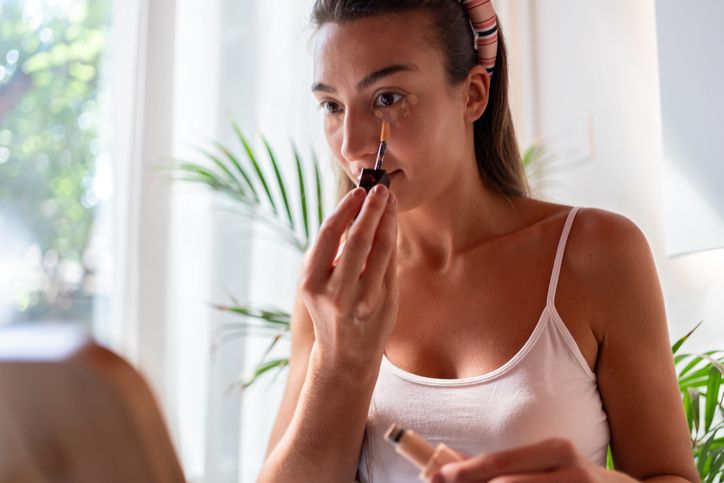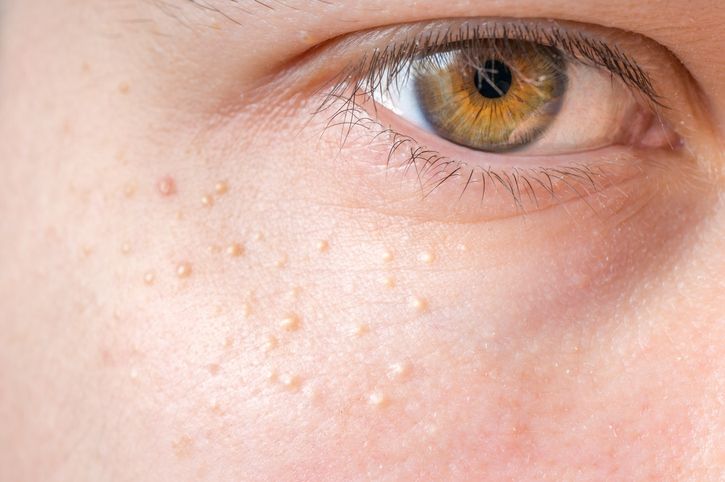- Home
- Trend
- Weight Loss Strategies
- Acne Tips
- Hair Health Information
- Blemish Removal Tips
- Acne Scar Removal Tips
- Muscle Building Techniques
- Intimate Care Tips
- Postpartum Intimate Care
- Eye Bags Wiki
- Tips for Face Slimming
- Secret of Permanent Hair Removal
- Breast Enlargement Tips
- Cure to Snoring
- Marionette Lines
- Skin-Tightening Secrets

免費體驗
Fotona 4D NightLase Snoring Treatment
1 Minute Self-Registration
Date should not be before minimal date
Are nightly snores keeping you up? Considering an anti-snoring device? Before you take the plunge into the world of snore solutions, let's debunk some myths and uncover the real benefits these devices can bring to your peaceful night's sleep.
1
What Does an Anti-Snoring Device Do?
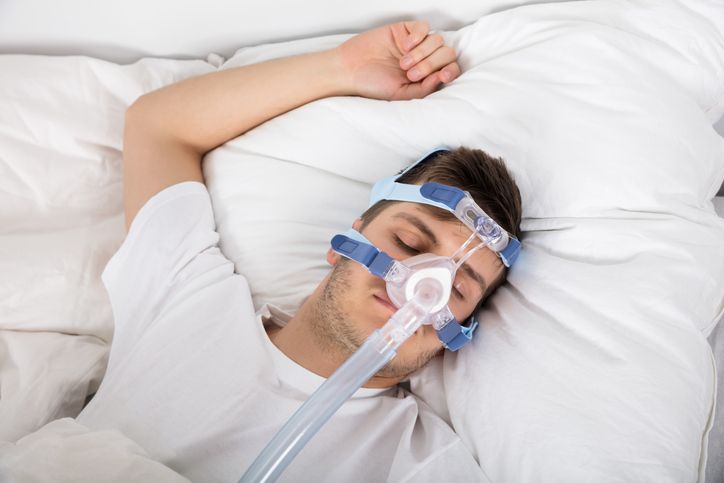
The anti-snoring device plays a crucial role in addressing and alleviating the symptoms associated with snoring, a common sleep condition characterised by the vibration of tissues in the airway. The goal of these devices is to mitigate the disruptive sounds caused by the obstruction or partial blockage of air passages during sleep. Let's delve into a comprehensive breakdown of how these devices function:
Open Airways
The primary objective is to ensure unobstructed airflow during sleep. These devices, such as nasal dilators and tongue-retaining devices, strategically target specific areas like the nose or throat. By doing so, they prevent potential obstructions and facilitate a smoother flow of air. Examples include nasal dilators that widen nasal passages and tongue-retaining devices that prevent the tongue from falling back and obstructing the throat.
Reduce Tissue Vibration
The central goal is to address the core cause of snoring by minimising vibrations in the soft tissues of the throat and mouth. Devices like mandibular advancement devices (MADs) or tongue stabilising devices (TSDs) achieve this by repositioning the jaw or tongue. This repositioning effectively diminishes the impact of tissue vibration, a major contributor to the sounds associated with snoring. Examples of these devices include MADs that adjust the position of the lower jaw and TSDs that stabilise the tongue.
Address Nasal Congestion
The objective here is to alleviate nasal congestion, a factor that can lead to mouth breathing and contribute to snoring. Devices like nasal strips or dilators come into play by enhancing nasal airflow. They achieve this by widening the nasal passages, thereby reducing the likelihood of mouth breathing and snoring. Examples of such devices include nasal strips adhered to the outside of the nose for external support and dilators inserted into the nostrils to maintain their shape.
Encourage Proper Sleep Positioning
The focus is on promoting specific sleeping positions that minimise the likelihood of snoring. Devices like positional therapy aids or specialised pillows guide individuals into positions that decrease the chances of throat obstruction and snoring. Examples include pillows designed to support side sleeping or position trainers that discourage sleeping on the back.
Increase Muscle Tone
The goal here is to enhance muscle tone in the throat and tongue to reduce the collapsibility of the airway during sleep. Devices like throat exercises or electrical stimulation devices specifically target these muscles, strengthening them to prevent airway collapse. Throat exercises may involve specific routines to improve muscle tone, while electrical stimulation devices deliver controlled impulses to stimulate muscle activity.
2
Nasal Snoring vs. Mouth Snoring: Understanding Their Difference and Which One Does Device Works Best
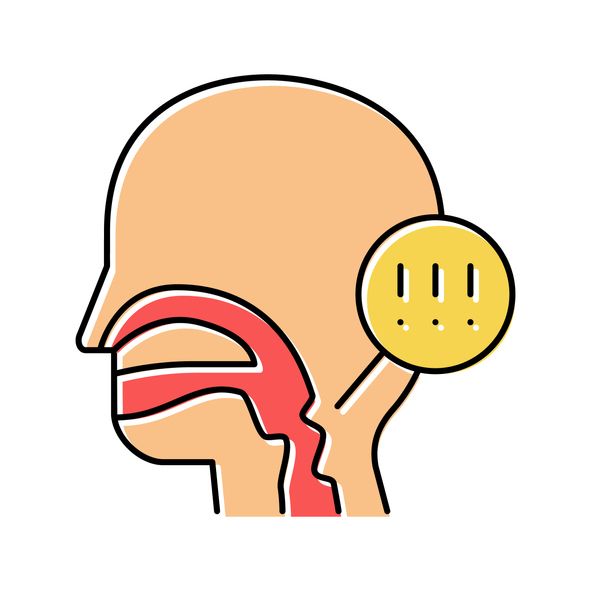
Nasal Snoring
Nature of Obstruction: Nasal snoring occurs when the primary obstruction is in the nasal passage, often due to factors such as nasal congestion, allergies, or anatomical issues limiting smooth airflow through the nose.
Sound Characteristics: The resulting sound of nasal snoring is generally softer, manifesting as a wheezing or whistling sound due to the nasal obstruction.
Mouth Snoring
Nature of Obstruction: Mouth snoring, on the other hand, is characterised by obstruction in the oral or throat area. This can result from relaxed throat muscles, the tongue falling back into the throat, or other anatomical issues in the oral cavity.
Sound Characteristics: Mouth snoring tends to produce louder and more guttural sounds compared to nasal snoring, as the obstruction is closer to the throat.
Anti-Snoring Devices and Treatment
For Mouth Snoring: Anti-snoring devices such as mandibular advancement devices (MADs) or tongue stabilising devices (TSDs) are often recommended for people with mouth snoring. MADs reposition the lower jaw to prevent airway collapse in the throat, while TSDs stabilise the tongue to minimise tissue vibration.
It's noteworthy that individuals may experience a combination of nasal and mouth snoring, and a comprehensive approach using a combination of devices may be necessary.
- Unlocking the Risks: Is Mouth Snoring a Serious Health Concern?
- Sleep Apnea Test: 1 Solution to Restore Oxygen Saturation and Beat Daytime Sleepiness
- The Hidden Dangers of Chronic Sleep Deprivation: How to Combat Them
- Snoring Relief Guide: 5 Proven Methods + 6 Highly Recommended Devices! Practical Tips for Different Snoring Levels
3
The 10 Myths You Should Know Before Buying Them
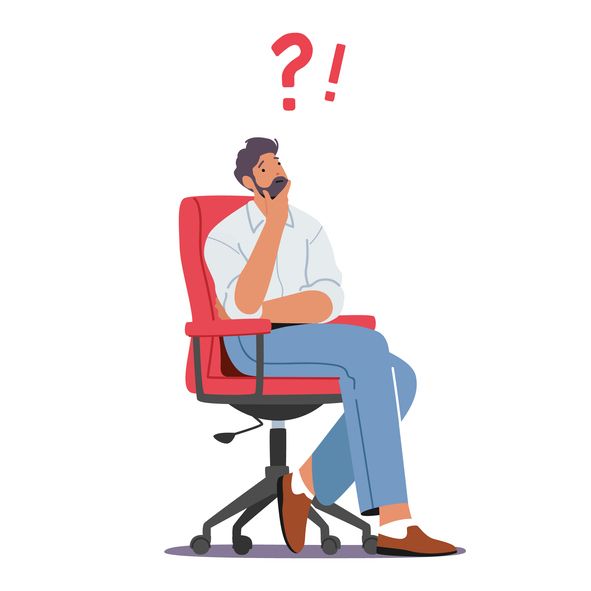
Before you make a decision about using anti-snoring devices, let's clear up some common misunderstandings surrounding them:
Myth 1: All Anti-Snoring Devices Work Equally Well
Reality: Different people respond differently to these devices. What works for one person might not work as effectively for another due to individual factors like anatomy and the specific cause of their snoring.
Myth 2: Anti-Snoring Devices Are Only for Severe Snorers
Reality: These devices are designed to help with snoring across the spectrum, from mild to severe cases. The key is figuring out the root cause of your snoring to find the most suitable device.
Myth 3: Snoring Only Affects Men
Reality: While more men may snore, it's crucial to understand that both men and women experience snoring. Anti-snoring devices are created to benefit individuals of any gender.
Myth 4: Anti-Snoring Devices Can Cure Sleep Apnea
Reality: Anti-snoring devices can provide relief for mild sleep apnea symptoms, but they are not a cure. For effective management of sleep apnea, it's essential to consult with healthcare professionals who can provide personalised guidance.
Myth 5: Anti-Snoring Devices Are Uncomfortable
Reality: Contrary to the belief that these devices are uncomfortable, many modern designs prioritise comfort. While some people may experience an initial adjustment period, discomfort is not a universal experience. Advances in technology and design have led to devices that are more user-friendly and accommodating.
Myth 6: All Snoring Arises from Nasal Issues
Reality: Snoring can stem from various factors, not limited to nasal issues. Throat and tongue-related problems also contribute to snoring. Anti-snore devices are crafted to address different aspects of airway obstruction, providing a more comprehensive approach to tackling snoring causes.
Myth 7: Once You Start Using a Device, You Can Stop Immediately
Reality: Consistency is crucial when using anti-snoring devices. Some devices require regular and ongoing use for optimal results. Abruptly stopping the use of these devices may lead to a return of snoring. Patience and commitment are key to achieving sustained benefits.
Myth 8: Anti-Snoring Devices Are Only for Older Adults
Reality: Snoring does not discriminate based on age. It can affect individuals of all age groups. As such, anti-snoring devices are not exclusive to older adults; they can be suitable for both younger and older populations, addressing snoring concerns across the spectrum of age.
Myth 9: Surgery Is the Only Permanent Solution
Reality: While surgery is an option for addressing snoring, it's not the sole permanent solution. Lifestyle changes, including weight management and the consistent use of anti-snoring devices, can also provide lasting relief. These non-invasive approaches offer effective alternatives to surgical interventions.
Myth 10: You Should Choose a Device Based Solely on Reviews
Reality: Individual responses to anti-snore devices vary significantly. What works exceptionally well for one person may not yield the same results for another. Relying solely on reviews is not sufficient. It's essential to consider personal factors, such as the specific causes of snoring, and seek guidance from a healthcare professional for a more personalised and effective approach.
4
Comparing The Device With Other Methods That Aim to Minimise Snoring

There are multiple methods out there that people may usually consider when thinking of getting an anti-snoring device, such as nasal strips, sleep medicine, anti-snoring gadgets, and anti-snoring pillows. Let's put them side by side to compare alongside Perfect Medical's signature snoring treatment.
Nasal Strips
Description: Nasal strips are adhesive strips placed on the outside of the nose. They physically widen the nostrils, enhancing nasal breathing and reducing snoring by improving airflow.
Comparison: - Mechanism: Nasal strips primarily address nasal congestion by widening the nasal passages, targeting one aspect of snoring. - Non-Invasive: Nasal strips are non-intrusive and provide relief for individuals with nasal congestion issues. - Immediate Effect: Nasal strips offer immediate relief by promoting better nasal breathing.
Fotona 4D NightLase Snoring Treatment
Description: The Fotona 4D NightLase Snoring Treatment is a non-invasive and painless procedure that employs NightLase Laser Technology. This innovative method targets and tightens the collagen fibrous networks within the tissues of the mouth. By reducing the size of these tissues, the airway opens up, effectively minimising snoring.
Comparison: - Non-Invasive Nature: The Fotona 4D NightLase treatment stands out as a non-surgical and non-invasive option, avoiding incisions or stitches. - Customizable: The intensity and duration of laser radiation can be adjusted based on an individual's needs, sleep position, and the severity of snoring, allowing for a personalised treatment approach. - Quick and Convenient: Treatment sessions typically last between 15 and 30 minutes, making it a convenient outpatient technique with no need for an overnight stay. - Long-Term Effects: Many individuals experience long-term improvements in snoring and sleep quality after the Fotona 4D NightLase treatment.
Sleep Medicine
Description: Sleep medicine, including prescription or over-the-counter medications, aims to address snoring by promoting relaxation, reducing muscle activity, or treating underlying sleep disorders.
Comparison: - Usage: Sleep medicine is often ingested orally in the form of pills or liquid. - Effect on Snoring: Medications may help relax muscles, but it may contribute to more snoring due to nasal obstruction or throat obstruction if the person has overly relaxed muscle. - Potential Side Effects: Some sleep medicines may have side effects and can interact with other medications.
Anti-Snoring Gadgets
Description: Anti-snoring gadget encompasses a wide range of devices, such as mandibular advancement devices (MADs) or tongue stabilising devices (TSDs), designed to reposition the jaw or tongue to reduce tissue vibration and snoring.
Comparison: - Mechanism: Gadgets target different aspects of snoring, including repositioning the jaw or stabilising the tongue. - Personalization: Effectiveness can vary based on individual responses and the specific causes of snoring. - Consistency Required: Some gadgets need consistent use for optimal results.
Anti-Snoring Pillow
Description: Anti-snoring pillows are designed to support proper head and neck alignment, keeping airways open and minimising snoring.
Comparison: - Sleep Position: Pillows promote specific sleeping positions to reduce snoring. - Non-Invasive: Like the Fotona 4D NightLase treatment, anti-snoring pillows are non-invasive. - Varied Effectiveness: The effectiveness of anti-snoring pillows can vary from person to person.
In summary, the Fotona 4D NightLase Snoring Treatment distinguishes itself as a non-invasive, customizable, and convenient option with potential long-term effects. Nasal strips, sleep medicine, anti-snoring gadgets, and anti-snoring pillows each target specific aspects of snoring and may be effective for certain individuals depending on their unique needs and the causes of their snoring.

免費體驗
Fotona 4D NightLase Snoring Treatment
1 Minute Self-Registration
Date should not be before minimal date
5
Closing Thoughts

Whether you're using anti-snoring gadgets or getting medical treatments, it's important to tackle snoring early. Ignoring persistent snoring might lead to more severe issues like obstructive sleep apnea, which can affect your heart health and overall well-being. Remember that whether you go for devices, treatments, or lifestyle changes, taking proactive steps to handle snoring not only improves how well you sleep but also helps your long-term health!

免費體驗
Fotona 4D NightLase Snoring Treatment
1 Minute Self-Registration
Date should not be before minimal date
FAQ

1. What are the best anti-snoring devices for both the snorer and their sleep partner?
Adjustable mouthpieces, mandibular advancement devices (MADs), and tongue stabilising devices (TSDs) are considered among the best anti-snoring devices for both the snorer and their sleep partner. These devices work by addressing the anatomical factors contributing to snoring, such as the position of the jaw or the stability of the tongue. Adjustable mouthpieces allow customization for individual comfort, while MADs and TSDs aim to reposition the lower jaw or stabilise the tongue to prevent airway obstruction.
2. How do internal nasal dilators work to resolve snoring, particularly for habitual snorers?
Internal nasal dilators are designed to alleviate snoring by widening the nasal passages. This can be especially effective for habitual snorers who experience snoring due to nasal congestion or obstruction. The dilators are inserted into the nostrils, helping to maintain their shape and prevent collapse during breathing. By improving nasal airflow, these devices reduce the resistance in the upper airway, minimising the likelihood of snoring.
3. Can difficulty breathing during sleep be alleviated by using a particular anti-snore device?
Yes, difficulty breathing during sleep can be alleviated by using continuous positive airway pressure (CPAP) machines. CPAP machines deliver a continuous stream of air through a mask, creating positive pressure that keeps the airways open. This is particularly beneficial for individuals with sleep apnea, a condition characterised by pauses in breathing during sleep. CPAP therapy helps maintain a consistent flow of air, preventing airway collapse and improving overall breathing.
4. Do sleep studies detect snoring and help in understanding the upper airway dynamics?
Sleep studies, also known as polysomnography, are comprehensive assessments that monitor various physiological parameters during sleep. These studies can indeed detect snoring and provide valuable information about upper airway dynamics. By monitoring factors such as airflow, respiratory effort, and oxygen levels, sleep studies help healthcare professionals understand the causes of snoring, whether related to nasal issues, throat obstruction, or other factors affecting the upper airway.
5. Which anti-snoring devices are recommended for both the snorer and their sleep partner, and how effective are they in resolving snoring issues?
Recommendations for anti-snoring devices vary based on individual factors. Adjustable mouthpieces, MADs, and TSDs are commonly recommended for both the snorer and their sleep partner. The effectiveness of these devices depends on the specific causes of snoring for each individual. Consulting with a healthcare professional is crucial to receive personalised guidance, as they can assess the underlying factors contributing to snoring and recommend the most suitable approach for effective resolution.







